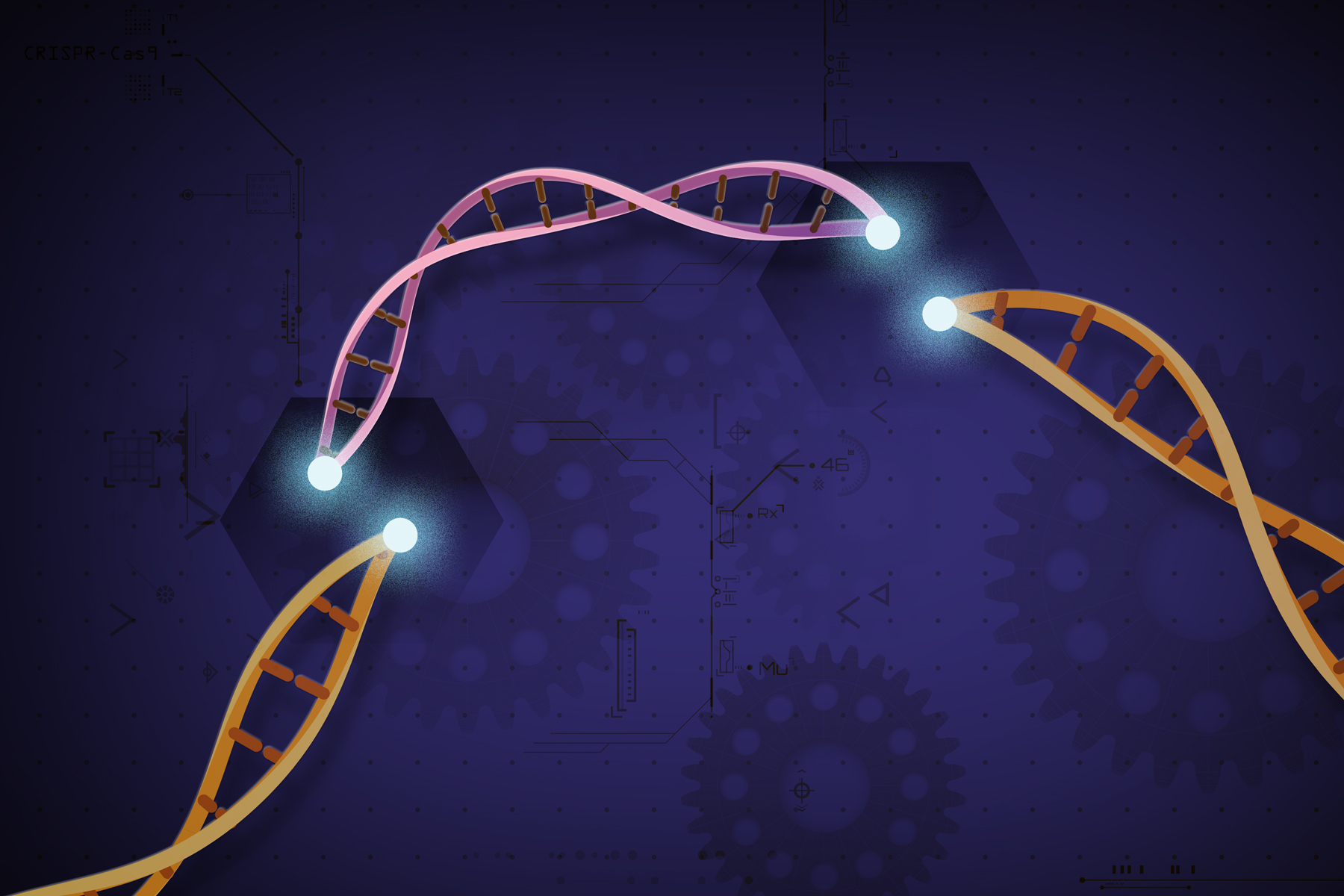Ambitious gene editing needs an ambitious pair of scissors
Amit Choudhary speaks about being agnostic to scientific disciplines, and the power of CRISPR/Cas9
TEDMED
“If you’re the smartest person in the room, then you’re in the wrong room,” is a quote that we likely have all heard at some point. This is something organic chemist/quantum biologist/molecular biologist Amit Choudhary has taken to heart. For him, it’s not so much about intelligence, but rather what kinds of questions are being asked. “You should be in the kind of room where the kind of questions you’re asking, no one else is thinking," he says. "And that’s a good place to start.”
On the surface, Choudhary’s career has had a lot of drastic twists and turns, bouncing from specialty to specialty. However, these seemingly disconnected choices have all been problem-driven, where the solutions required fluidity of knowledge. To Choudhary, this has given him a significant amount of freedom in solving the problems he is most interested in. He's "agnostic" about discipline when approaching problems. “It allows me to look at things as more of a scientist, rather than as a chemist or as a biophysicist,” he says.

Ernesto del Aguila III, National Human Genome Research Institute, NIH
This winding path has landed him with a lab full of pythons and a focus on CRISPR/Cas9 technology. The pythons are, unfortunately, a side note in this story (“As you can imagine, the mice facility guys were not happy about the idea of snakes roaming around,” Choudhary quips), but they will likely eventually play an important intersecting role in his CRISPR studies. CRISPR, paired with the DNA-cutting Cas9, is a powerful genome-editing tool. Biologists use it regularly in lab studies, but the real power of CRISPR comes from its potential as a gene therapy to cure human diseases.
A main focus for Choudhary’s lab is strictly regulating the function of the Cas9 DNA-cutting enzyme. Current strategies for CRISPR-based therapeutics fall short for many reasons, but one of the central issues is off-target effects. Off-target effects are exactly what they sound like — it’s an unwanted side effect that occurs at the genomic level. Genomes are large, and targeting Cas9 to one specific place and no other is difficult. While cells will eventually degrade any Cas9 that entered the cell, it can take hours to days to fully eliminate. By then, a Cas9 may have indiscriminately targeted other genes, ones that weren’t meant to be changed. This could have detrimental effects if used in human therapeutics. The Choudhary lab has discovered that the best way to reduce — even possibly fully eliminate — these unwanted events is to limit the activity of Cas9.
Cas9 and its many similar cousins are the driving force behind CRISPR technology. To fully control CRISPR, Cas9 must be regulated in both time and space. In the Choudhary lab, they have discovered a simple solution to temporal regulation with small molecule inhibitors. These are exactly what they sound like — just small molecules — and they increasingly common in both research and medical settings. The ones relevant here are ubiquitous for many reasons: they are stable in the body and don’t induce an immune response; they are inexpensive to make and easily adaptable, making them widely available; and they are small, so cells easily take them up. Choudhary’s lab has identified a small molecule, BRD0539, which can strictly regulate Cas9 — so much so, that they have found it reduces off-target effects by as much as five-fold.
When developing their inhibitor, Choudhary knew they should focus on small molecules that have two main conditions: Bind to Cas9 with high specificity and reduce the amount of time it takes for cells to degrade Cas9. The lab used a high-throughput screen with these conditions to first identify a compound called BRD7087 as an effective Cas9 inhibitor. In situations such as these, where a potential small molecule inhibitor is discovered, the "hit" compound and several other compounds with similar structures are screened in tests on cells. From these screens, the Choudhary lab found a compound that was more potent than the original BRD0539. The specificity and low cellular toxicity make BRD0539 a great target and a critical step towards the development of better CRISPR therapeutics.
Eventually Choudhary hopes to take his research and apply to it monogenic diabetes — a type of genetic diabetes. Unlike type I or type II diabetes, monogenic diabetes arises from a single gene mutation. This mutation in insulin-secreting beta cells — the important regulators of blood sugar that are disrupted in diabetes — leads to onset of diabetes, even in individuals who appear to be otherwise healthy. Monogenic diabetes runs in Choudhary’s family, but he hopes that future CRISPR therapeutics will eventually help reset the mutation to stop the disease.
For Choudhary — and no doubt countless other researchers — the good definitely outweighs the bad. “I think we are really, really lucky to be alive and witnessing all of this,” he says. “You know, we talk about fire, and we talk about the wheel, and we talk about all these different inventions. There’s a good chance that we may have just invented a fire or a wheel of our generation.”